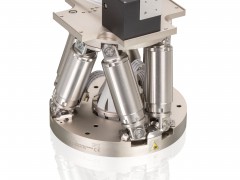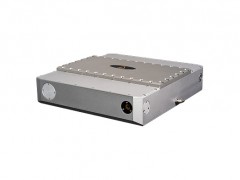
Japan uses laser to discover "microbubble implosion" new particle acceleration mechanism
source:Laserfair
release:Nick
keywords: laser microbubble implosion
Time:2018-06-14

"Microbubble implosion" concept map. Image courtesy of Osaka University
A team led by Prof. Takashi Murakami of the Institute of Laser Science at Osaka University in Japan announced that they have discovered a new particle acceleration mechanism called “microbubble implosion”: the outside of hydrogen compounds that contain micro-sized bubbles (spherical voids) When irradiating an ultra-high intensity laser, the bubble emits ultra-high-energy hydrogen ions (protons) at the moment of contraction to atomic size.
In this mechanism, positively-charged ions fill the bubble with electrons of super-high temperature of 100 billion degrees Celsius, thereby generating a strong negative electrostatic force and accelerating toward the center of the bubble. Countless ions accelerate and collide at high speeds at the singularity of the center of the sphere. Theoretically, they can achieve high-density compression comparable to that of the white dwarf in a nanoscale, extremely small space of only tens of atoms. If the substance is compressed to an unprecedentedly high density, a cube-sized substance can weigh more than 100 kilograms.
In addition, the researchers found that the bubbles repeatedly shrink and swell in tens of femtosecond cycles. When they shrink to the nanometer size and reach the maximum compression, they emit high-energy protons, which are as novel as the “nano pulsars”.
If a conventional accelerator is used, the acceleration distance of high-energy particles needs several tens to several hundreds of meters. This amazing physical phenomenon of nano-scale positive charge radiation has been discovered for the first time. In this phenomenon, the decisive action is the exact opposite of the big bang, namely the specific movement of charged ions to a point in space and the hypervelocity collision at about half the speed of light. This is completely different from all of the acceleration principles, which have been discovered and predicted so far, in nature.
The significance of this research result is that by studying the phenomenon of nanometer and femtosecond phenomena that are extremely small and extremely short, they not only help clarify some incomprehensible mysteries in space physics, such as the interplay of high-energy particles in stars and the universe. The origin is also expected to serve as a small neutron source for nuclear fusion reactions in medical and industrial applications.
The research results were published on the 15th in the British online magazine Scientific Reports.
- RoboSense is to Produce the First Chinese Multi-beam LiDAR
- China is to Accelerate the Development of Laser Hardening Application
- Han’s Laser Buys Canadian Fiber Specialist CorActive
- SPI Lasers continues it expansion in China, appointing a dedicated Sales Director
- Laser Coating Removal Robot for Aircraft
 FISBA exhibits Customized Solutions for Minimally Invasive Medical Endoscopic Devices at COMPAMED in
FISBA exhibits Customized Solutions for Minimally Invasive Medical Endoscopic Devices at COMPAMED in New Active Alignment System for the Coupling of Photonic Structures to Fiber Arrays
New Active Alignment System for the Coupling of Photonic Structures to Fiber Arrays A new industrial compression module by Amplitude
A new industrial compression module by Amplitude Menhir Photonics Introduces the MENHIR-1550 The Industry's First Turnkey Femtosecond Laser of
Menhir Photonics Introduces the MENHIR-1550 The Industry's First Turnkey Femtosecond Laser of Shenzhen DNE Laser introduced new generation D-FAST cutting machine (12000 W)
more>>
Shenzhen DNE Laser introduced new generation D-FAST cutting machine (12000 W)
more>>
